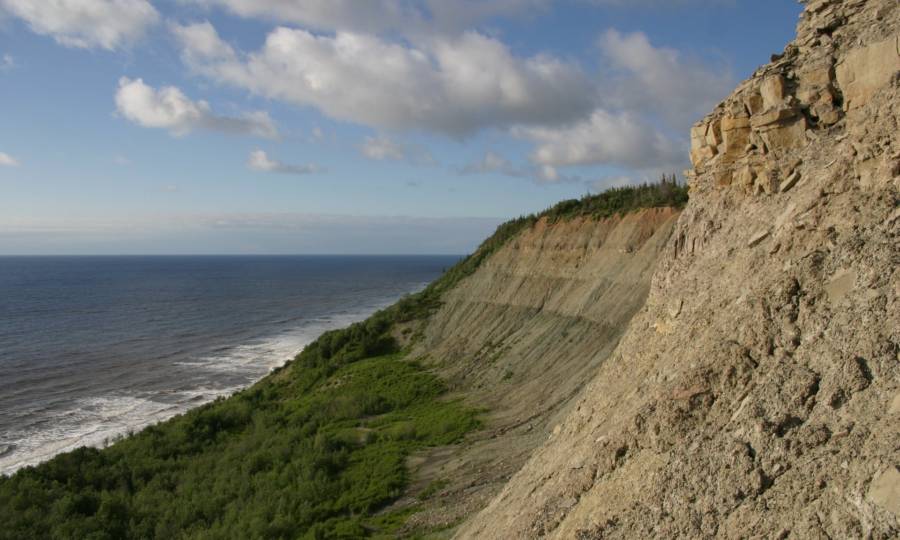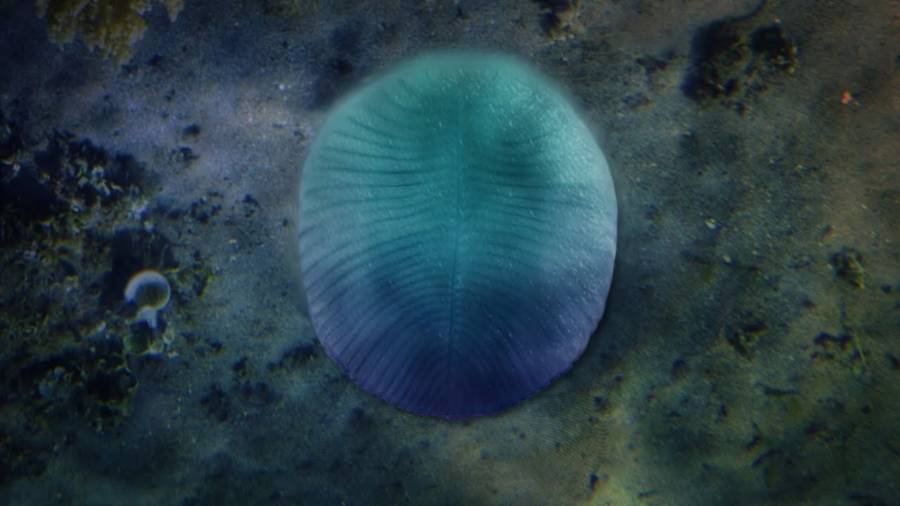Hidden for Half a Billion Years: The Fossil That Could Rewrite the Origin of Animal Life
However, in order to test this new approach, researchers needed to find Dickinsonia fossils that still contained organic matter.
Ilya Bobrovskiy, the lead author of the paper, traveled to the secluded cliffs in Russia to extract more Dickinsonia fossils.
“I took a helicopter to reach this very remote part of the world – home to bears and mosquitoes – where I could find Dickinsonia fossils with organic matter still intact,” Bobrovskiy said.

Ilya BobrovskiyThe cliffs where the fossils were found.
“These fossils were located in the middle of cliffs of the White Sea that are 60 to 100 meters high. I had to hang over the edge of a cliff on ropes and dig out huge blocks of sandstone, throw them down, wash the sandstone and repeat this process until I found the fossils I was after,” he continued.
His hard work paid off because when the team examined these new fossils, they found a startling abundance of cholesterol, which is “a type of fat that is the hallmark of animal life.” This allowed them to, once and for all, classify the Dickinsonian as animals.
With this new confirmation, a debate that has raged on since 1947 can now finally be put to bed, and we can understand just a bit more about life as we know it on the planet.
Next, check out the jawbone discovered by scientists that is the oldest human fossil ever found. Then take a look at “Little Foot,” the 3.7 million-year-old hominid skeleton.












